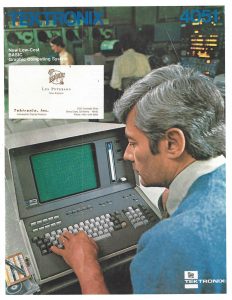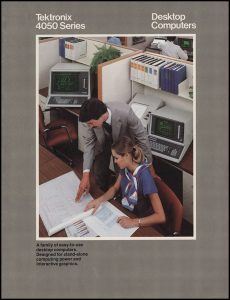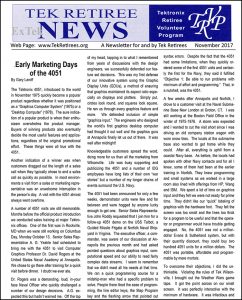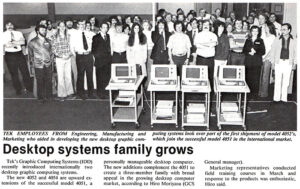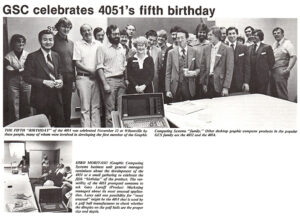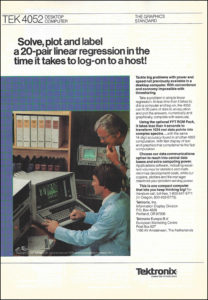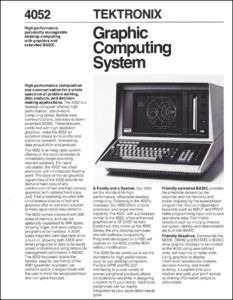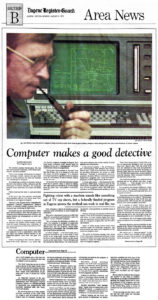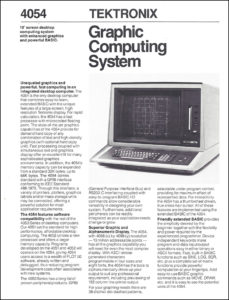In 1976 Tektronix introduced a graphic engineering desktop computer called the 4051. It consisted of a 1024x768 Direct View Storage Tube, a 3M DC300 tape system, an 800KHz Motorola 6800 running BASIC, and a rear RomPack for extending the capability of the system. It was an incredible product and was a follow-on to the Tek 21 and 31 Calculators.
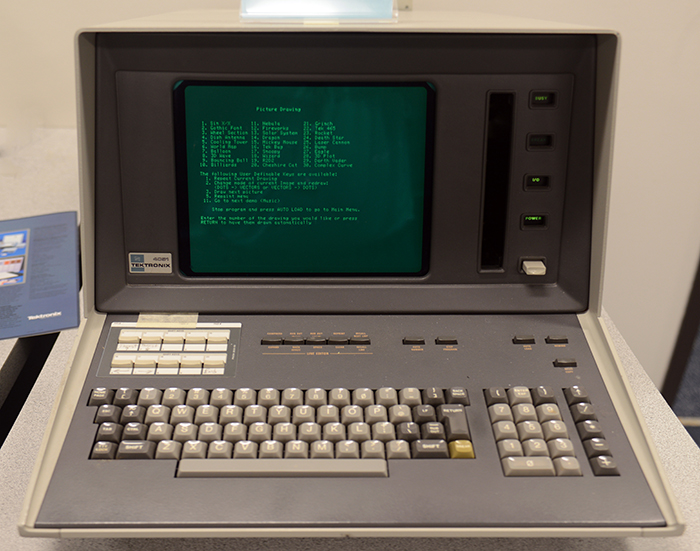
This drawing, done by Maynard Leach, an Industrial Designer for IDD, shows the Graphics Computing Systems (GCS) team in action. The character in the upper left is Hiro Moriyasu, who had overall responsibility for the 4051 program.
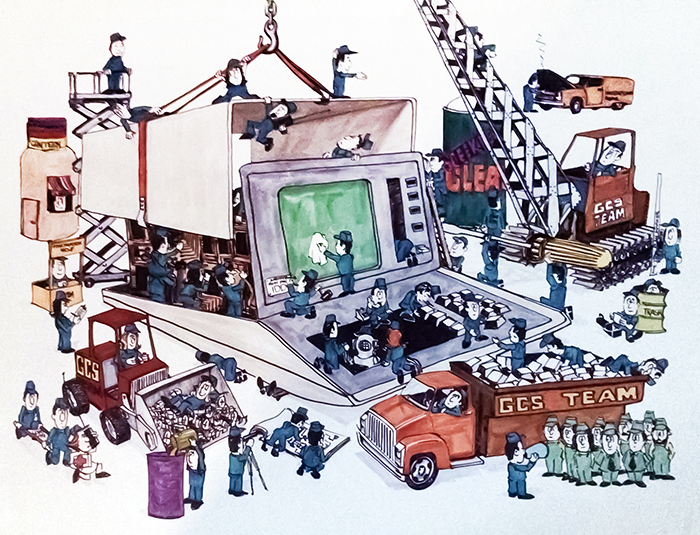
This cartoon was in the 1981 4051 GPIB manual 070-2270-00.
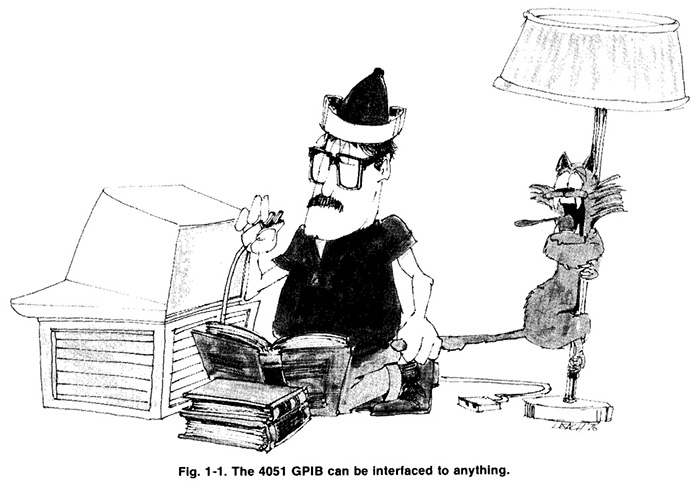
While these systems still operate fine and have sharp crisp displays, the tapes did not age well. They used tension bands that rot and sometimes pull the oxide off the tapes. Fortunately ex-Tek engineer Micheal Cranford designed a flash-based rampack to fit in the rear slots and replace the tape drive and with a lot more capacity. The museum sells both the maxirom on our eBay store.
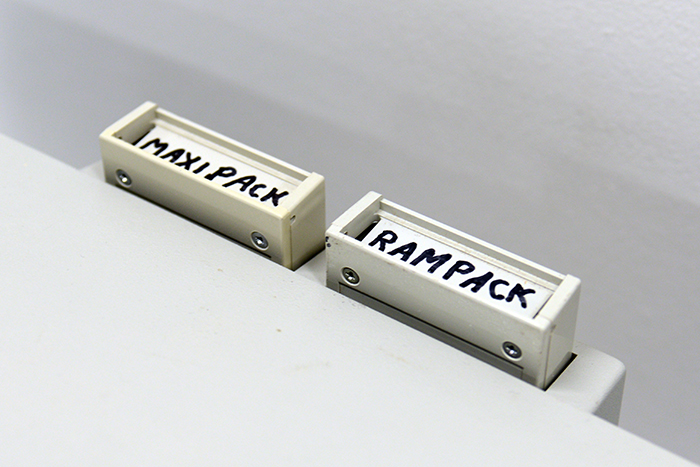
We tend to run program #8 at the museum which is a free-running demo program with 30 images.
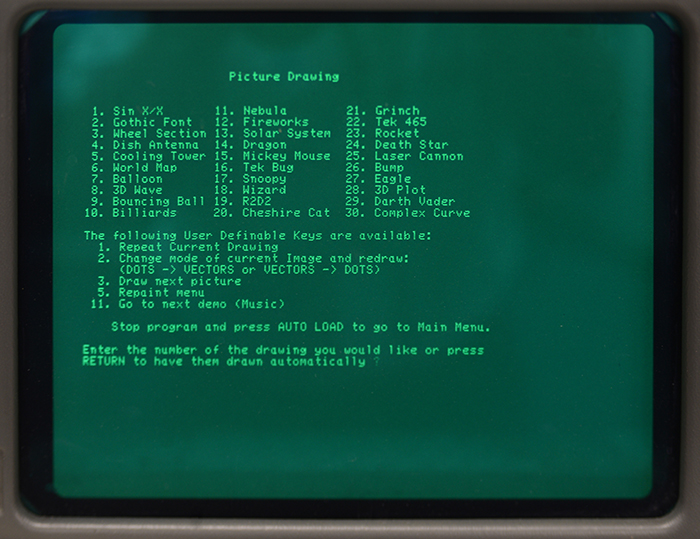
Click on the image below to open a scan of the 1976 sales brochure for the 4051.
This announcement appeared in the March 1976 issue of Byte Magazine.
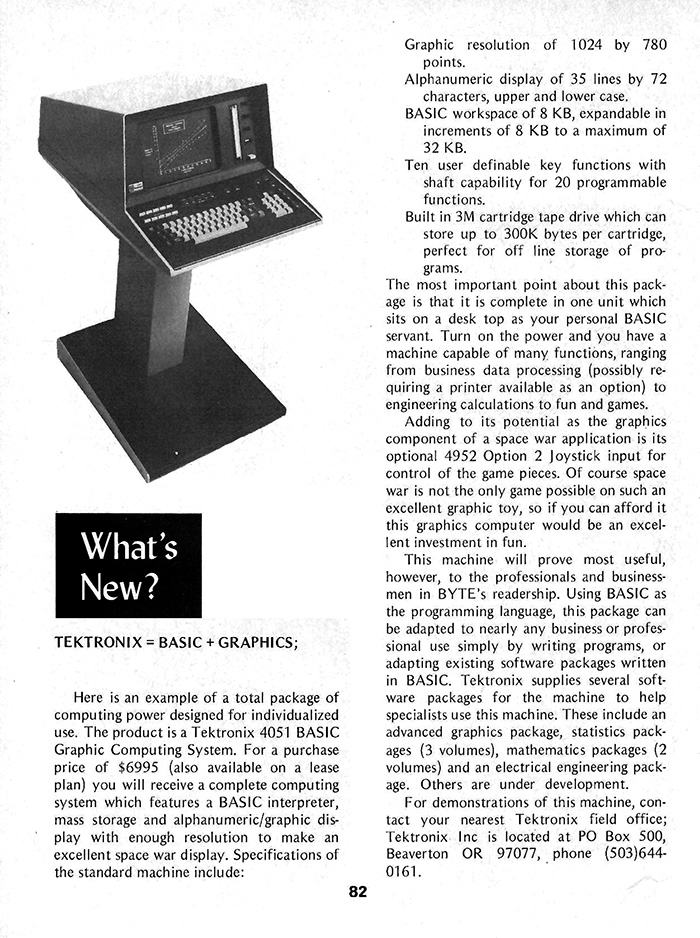
Thousands of programs were written for the 4051. Tektronix released many software RomPacks for a variety of applications. The follow-on products were the 4052 and 4054. Both used a bit-slice processor to increase speed by ~10X. The 4054 increased the display size to 19" and the resolution to 4096x3072. The museum has two 4051 and one 4052 systems on display. Click on the image below to read the brochure on the 4050 family of desktop computers.
There is a video of a 4010 demonstration that essentially shows what these displays looked like in operation. Stop by the museum to see this fantastic system in operation. We also have a restored 4662 8 pen plotter attached to a 4051 and are seeking a program to utilize this plotter.
This November 2017 Tek Retiree News has two articles, Early Marketing Days of the 4051 by Gary Laroff, and The Tektronix 4051 By Bill Gellatly. Click on the image to view the PDF.
Tektronix designed an internal 6800 microprocessor development system called the "bit bucket". This was used on many development projects including the 4051.
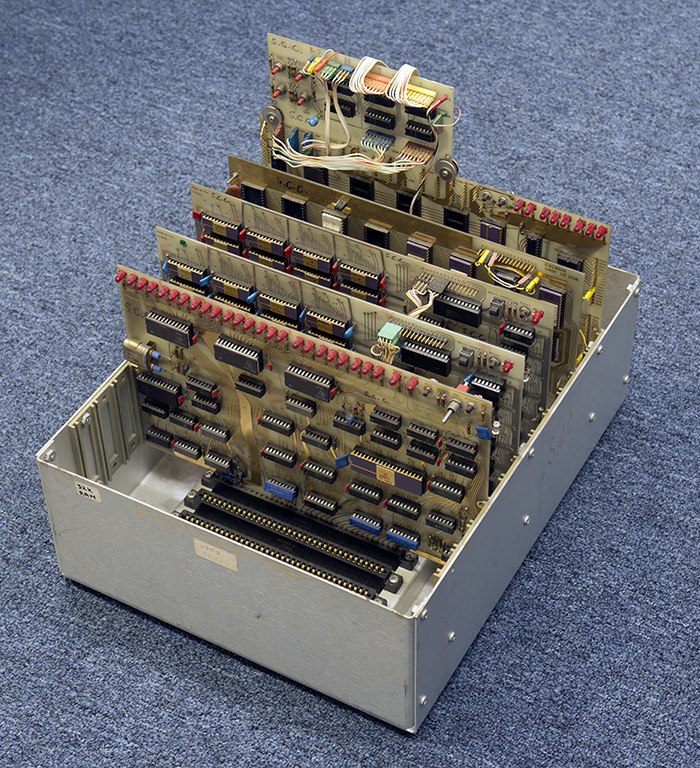
The 4052 and 4054 followed the 4051. Instead of a Motorola 6800 microprocessor they used an AMD2901 bit-slice processor. The faster processor, coupled with floating point hardware, increased the performance of these products to about 30 times the 4051.
This July 13, 1979 TekWeek article features the first shipments of the 4052. Names have been added on our our Help Identify Individuals news page. Click on the image to view the PDF.
This December 5, 1980 TekWeek features the 5th "birthday" of the 4051. Names have been added on our our Help Identify Individuals news page. Click on the image to view the PDF.
This 4052 ad appeared in November of 1981. Click on the image to view the PDF.
This 1979 brochure describes the 4052. Click on the image to view the PDF.
This August 6,1979 Eugene Register-Guard article describes using computers to fight crime. Although Tektronix is not mentioned, the photo is clearly of a 4052. Click on the image to view the PDF.
The museum has a 4052 on display with a 4631 hard copy unit. The hard copy has the 3M dry silver paper removed showing the single line display with the fiber optic faceplate. The two units demonstrate how hard copy was done on the DVST displays. Also on display is a 13" ceramic funnel direct view storage tube (DVST).
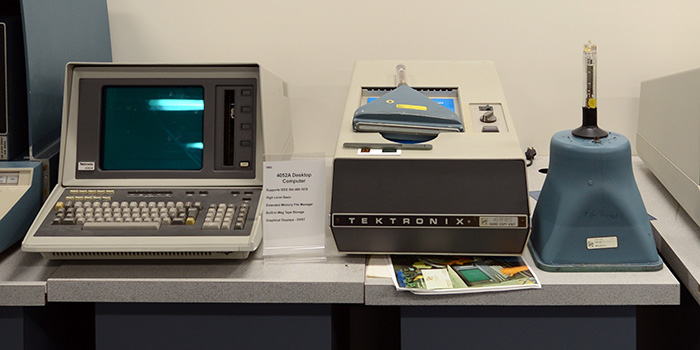
This vintageTEK video describes some of the design details of the 4052 and shows a speed comparison with the 4051.
The 4054 was a 19" version and had an optional separate processor to do a limited amount of refreshed (dynamic, non-stored) display, and a further option to display the refreshed image in orange. This 1979 brochure describes the 4054.. Click on the image to view the PDF.
There were also a number of peripherals available for the 4050 series. This December 11, 1981 TekWeek features the 4909 Multi-user File System. The museum has a 4909 on display next to the 4051.
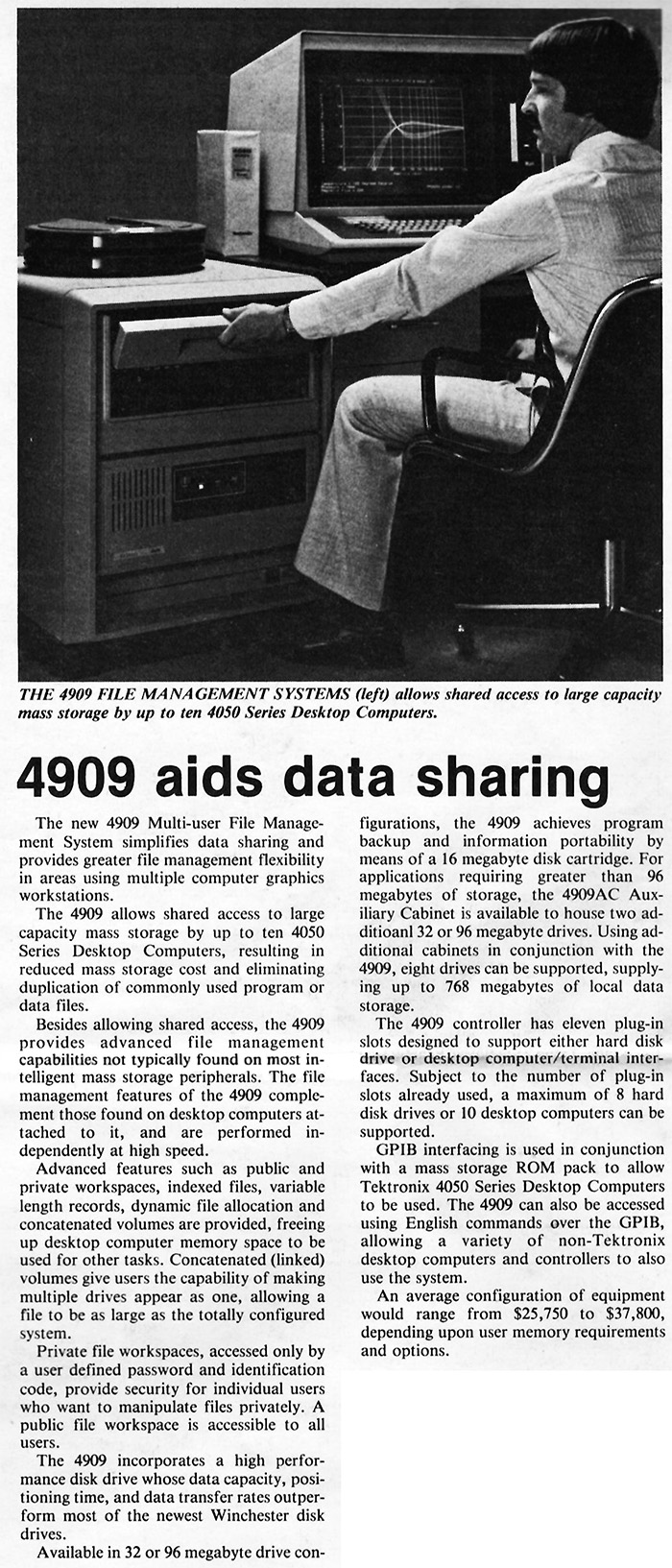
This The First Graphical PC Came From 1970s Oregon? video is on YouTube. (YouTube Website)

